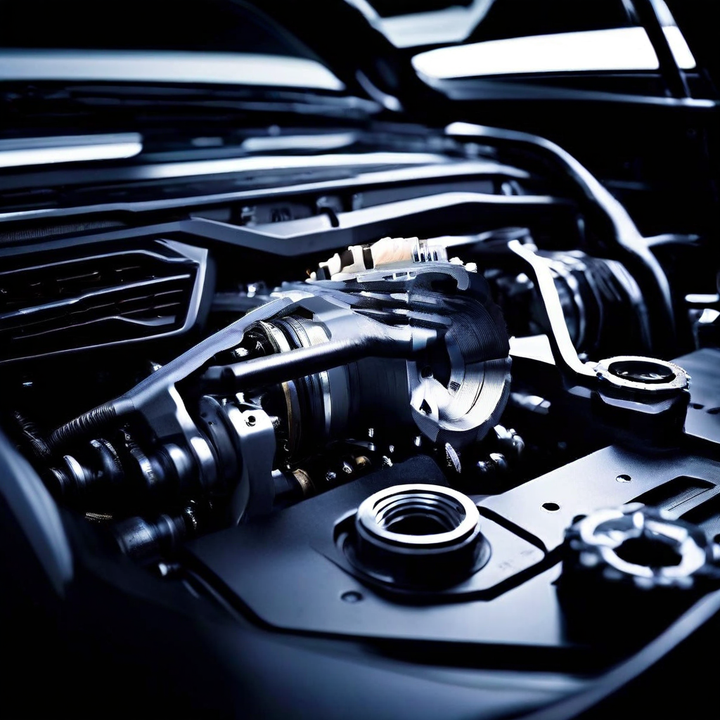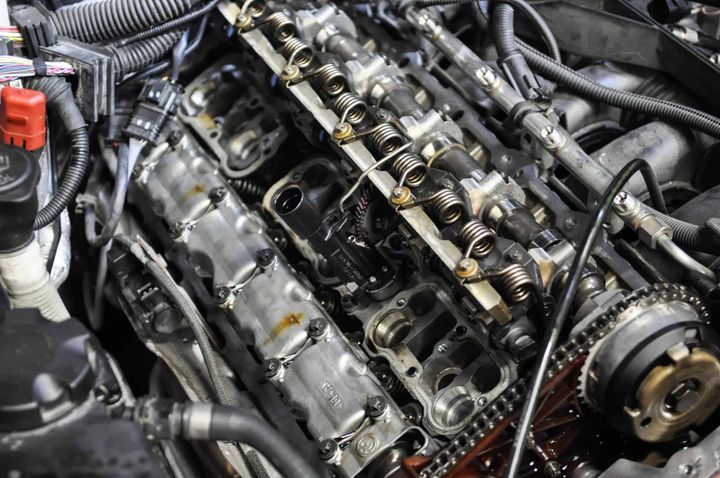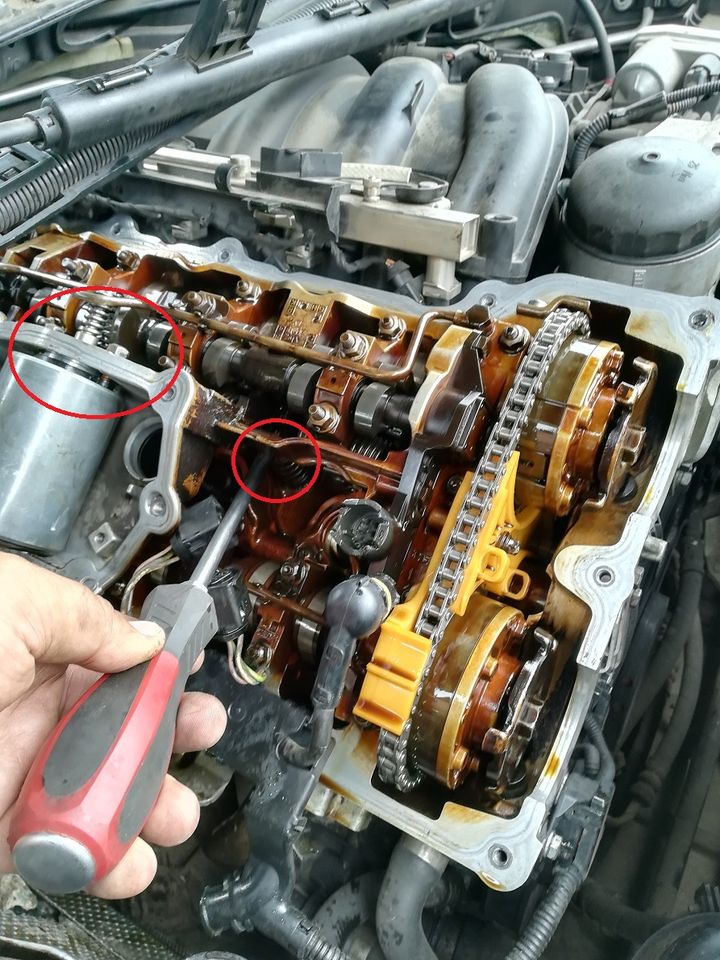


For BMW owners, the Valvetronic system is a marvel of engineering that enhances engine performance, fuel efficiency, and emissions control. However, when this intricate mechanism fails, the repair costs can be staggering. This comprehensive guide delves into the intricacies of the Valvetronic system, common issues, diagnostic procedures, and the financial implications of a Valvetronic motor or eccentric shaft replacement.

We'll explore the root causes of Valvetronic failures, the complexity of the repair process, and the factors that contribute to the often-exorbitant costs associated with these repairs. Additionally, we'll examine the pros and cons of DIY repairs versus seeking professional assistance, warranty coverage considerations, and potential cost-saving strategies through preventive maintenance and aftermarket options.
Whether you're a BMW enthusiast or a pragmatic owner seeking to make informed decisions, this guide will equip you with the knowledge necessary to navigate the intricate world of Valvetronic repairs, empowering you to make well-informed choices that align with your priorities and budget.
The Valvetronic system is a variable valve lift mechanism employed in BMW engines, working in tandem with variable valve timing to enable infinite adjustment of the intake valve timing. This innovative technology effectively eliminates the need for a throttle body, resulting in improved efficiency, enhanced fuel economy, and reduced emissions.
At the heart of the Valvetronic system lies the valvetronic motor, a crucial component responsible for actuating an eccentric shaft that precisely controls the intake valve lift during each rotation of the intake camshaft. This intricate mechanism allows for precise control over the engine's air intake, optimizing performance and efficiency across a wide range of operating conditions.
The valvetronic motor is a highly sophisticated electromechanical device that translates electronic signals from the engine control unit into precise mechanical movements. This motor is responsible for adjusting the position of the eccentric shaft, which in turn regulates the lift of the intake valves, enabling the engine to breathe more efficiently and respond dynamically to varying load conditions.
The eccentric shaft is a critical component within the Valvetronic system, directly controlled by the valvetronic motor. This shaft features an eccentric profile that, when rotated, alters the lift of the intake valves, allowing for precise control over the amount of air entering the combustion chambers.
One of the most significant advantages of the Valvetronic system is its ability to eliminate the need for a traditional throttle body. By controlling the intake valve lift directly, the system can regulate the amount of air entering the engine without the need for a restrictive throttle plate. This innovative approach not only improves efficiency but also enhances throttle response and reduces pumping losses, contributing to improved fuel economy and lower emissions.
While the Valvetronic system is a technological marvel, it is not immune to wear and tear over time and mileage. As the components age, certain issues can arise, leading to a range of symptoms that should not be ignored.

One of the most common issues affecting the Valvetronic system is the wear and binding of the eccentric shaft. Over time and with extensive use, the eccentric shaft can develop wear patterns in certain spots, causing it to bind and create resistance within the system.
Common Causes of Eccentric Shaft Wear and Binding:
| Cause | Description |
|---|---|
| Age and Mileage | The eccentric shaft is subject to wear over time and with increased mileage. |
| Lack of Maintenance | Failure to follow recommended maintenance schedules can accelerate wear. |
| Contamination | Contaminants in the engine oil or debris can cause premature wear. |
| Manufacturing Defects | Rare cases of manufacturing defects can lead to uneven wear patterns. |
When the engine control unit detects increased resistance or abnormal operation within the Valvetronic system, it triggers a series of fault codes or Diagnostic Trouble Codes (DTCs). Common fault codes associated with Valvetronic issues include:
P1014
P1017
P1023
P1030
And others related to the valvetronic motor and its operation.
As the Valvetronic system begins to fail, drivers may experience a range of symptoms that should not be ignored. These symptoms can include:
Rough idle
Persistent check engine light
No-start condition (in severe cases)
Other potential symptoms:
Reduced fuel efficiency
Hesitation or stumbling during acceleration
Increased emissions or failed emissions test
Ignoring these warning signs can lead to further damage and potentially more costly repairs down the line. It is crucial to address Valvetronic issues promptly to prevent escalating problems and ensure the longevity of your BMW's engine.
When faced with potential Valvetronic issues, proper diagnosis and testing are essential to identify the root cause and determine the appropriate course of action.
To diagnose Valvetronic problems, mechanics follow a comprehensive test plan that involves running the system through its entire operating range and relearning the position of the eccentric shaft. This process helps identify any irregularities or deviations from the expected performance parameters.
The Valvetronic System Test Plan typically includes the following steps:
Connect the vehicle to a diagnostic scanner
Clear any existing fault codes
Run the Valvetronic system through its full range of operation
Monitor system parameters and record any deviations
Perform the relearn procedure for the eccentric shaft position
Analyze the data and identify any issues or irregularities
In addition to the test plan, mechanics may employ specialized diagnostic tools to monitor the movement and timing of the eccentric shaft. By tracking the time it takes for the shaft to reach its limits and analyzing its behavior throughout the operating range, they can pinpoint any issues with the shaft's performance or binding.
Common diagnostic tools used for monitoring eccentric shaft movement:
Oscilloscopes
Timing lights
Specialized BMW diagnostic software
If the eccentric shaft is found to be faulty or exhibiting excessive wear, the vehicle will continue to throw error codes and display symptoms even after the relearn procedure. In such cases, a replacement of the valvetronic motor or eccentric shaft may be necessary to restore proper system function.
Accurate diagnosis is crucial to avoid misdiagnosing the issue and potentially wasting time and money on unnecessary repairs. By leveraging the expertise of trained professionals and utilizing the appropriate diagnostic tools, BMW owners can ensure that the root cause of the Valvetronic problem is identified and addressed effectively.
Replacing the valvetronic motor or eccentric shaft is a complex and often costly endeavor, with various factors contributing to the overall repair cost.
According to various sources, the cost for a replacement valvetronic motor can range from $200 to $750, depending on the specific BMW model and the sourcing of the part. This cost represents a significant portion of the overall repair expense.
Factors Affecting Valvetronic Motor Replacement Cost:
| Factor | Description |
|---|---|
| BMW Model | Costs can vary based on the specific model and engine configuration. |
| Part Sourcing | Genuine BMW parts tend to be more expensive than aftermarket options. |
| Labor Rates | Labor rates can vary significantly between repair facilities. |
| Additional Parts | Related components like gaskets or seals may need to be replaced. |
In cases where the eccentric shaft itself needs to be replaced, a replacement kit is typically required. These kits can cost around $460 or more, depending on the supplier and the specific components included.
Eccentric Shaft Replacement Kit Components:
Eccentric shaft
Seals and gaskets
Specialized installation tools (if required)
While the replacement parts can be costly, the labor costs associated with a Valvetronic repair often represent the most significant portion of the overall expense. Estimates for labor costs can range from $400 to $730 or higher, depending on the complexity of the repair and the hourly rates charged by the repair facility.
Factors Affecting Labor Costs:
Repair complexity (engine accessibility, component removal, etc.)
Hourly labor rates at the repair facility
Additional diagnostic or programming time required
In addition to the valvetronic motor or eccentric shaft replacement, the repair may require the replacement of other related components, such as gaskets, seals, or fluids. These additional parts can further increase the overall cost of the repair.
Common Additional Parts Required:
Valve cover gaskets
Engine oil and filter
Coolant or other fluids (if necessary)
The total cost of a Valvetronic repair can vary significantly depending on the specific BMW model, the age and mileage of the vehicle, and the extent of the repair required. Some sources report total repair costs ranging from $1,480 to over $3,000, including labor and additional parts.
It is essential for BMW owners to be prepared for the potential financial impact of a Valvetronic repair and to factor in these costs when considering the long-term ownership and maintenance expenses of their vehicle.
When faced with the prospect of a Valvetronic repair, BMW owners may consider attempting a DIY (Do-It-Yourself) approach to save on labor costs. However, this decision should be carefully evaluated, as the complexity of the repair and the potential risks involved can outweigh the perceived cost savings.
Replacing the valvetronic motor or eccentric shaft is a complex process that requires the removal of the valve cover and the use of specialized BMW tools to release tension from the shaft springs and levers. Improper handling during this process can lead to catastrophic engine failure if a spring jumps off or is misaligned.
After the repair is completed, the limit stops must be relearned using a BMW scan tool, a procedure that requires specialized knowledge and equipment. Failure to properly relearn the limit stops can result in further issues and potential damage to the engine.
For these reasons, it is generally advisable for most BMW owners to have the Valvetronic repair performed by a reputable BMW specialist or dealership with the necessary expertise, tools, and diagnostic equipment. While the labor costs may be higher, the peace of mind and reduced risk of further damage often outweigh the potential savings of a DIY approach.
However, for experienced DIY enthusiasts with access to the required tools and resources, attempting a Valvetronic repair may be a viable option. It is crucial to thoroughly research the repair process, acquire the necessary specialized tools, and have a comprehensive understanding of the system's intricacies before attempting such a complex repair.
Ultimately, the decision to pursue a DIY Valvetronic repair or seek professional assistance should be based on a careful evaluation of your skill level, available resources, and risk tolerance.
DIY vs. Professional Repair: Pros and Cons
| Approach | Pros | Cons |
|---|---|---|
| DIY Repair | - Lower labor costs | - High risk of further damage |
| - Sense of accomplishment | - Requires specialized tools and knowledge | |
| - Time-consuming process | ||
| Professional Repair | - Reduced risk of damage | - Higher labor costs |
| - Expertise and proper tools | - Potential for additional fees | |
| - Warranty coverage (if applicable) |
In some cases, BMW owners may be able to take advantage of warranty coverage to offset the costs associated with a Valvetronic repair.
BMW offers a specific warranty known as the SULEV (Super Ultra Low Emission Vehicle) warranty, which covers certain components related to emissions control systems, including the Valvetronic system.
However, it is important to note that warranty coverage can vary based on the vehicle's age, mileage, and specific warranty terms. Some warranties may have time or mileage limitations, while others may exclude certain components or types of damage.
Common Warranty Limitations:
| Limitation | Description |
|---|---|
| Time | Many warranties have a time limit, such as 4 years or 50,000 miles. |
| Mileage | Warranties may be limited to a certain mileage, e.g., 100,000 miles. |
| Exclusions | Certain components or types of damage may be excluded from coverage. |
| Maintenance Requirements | Failure to follow recommended maintenance can void the warranty. |
To determine if a Valvetronic repair qualifies for warranty coverage, BMW owners should carefully review their warranty documentation and communicate with their local dealership or BMW customer service representatives. Providing accurate information about the vehicle's history, maintenance records, and the nature of the issue can help facilitate the warranty claim process.
If warranty coverage is available, BMW owners should be prepared to follow the prescribed claim process, which may involve scheduling an appointment with an authorized repair facility, providing documentation, and adhering to any specific requirements outlined in the warranty terms.
While navigating the warranty claim process can be time-consuming, taking advantage of available coverage can significantly reduce the financial burden associated with a Valvetronic repair.
While Valvetronic repairs can be costly, there are proactive measures BMW owners can take to help prevent premature failures and potentially mitigate the associated costs.
One of the most effective ways to prevent Valvetronic issues is to follow the recommended maintenance schedule provided by BMW. Regular maintenance can help identify potential problems early and ensure that all components are functioning optimally.
Recommended Maintenance Schedule for Valvetronic System:
| Maintenance Item | Frequency |
|---|---|
| Engine oil and filter change | Every 5,000 - 10,000 miles or as recommended |
| Valve cover gasket replacement | Every 60,000 - 80,000 miles or as needed |
| Eccentric shaft inspection | During major service intervals |
| Valvetronic system diagnostic scan | During routine maintenance |
During a Valvetronic repair, it is advisable to consider replacing related components, such as gaskets and seals, to ensure the longevity and proper functioning of the system. This proactive approach can help prevent future issues and potentially save money in the long run.
While genuine BMW parts are often preferred for their quality and reliability, exploring cost-effective aftermarket options for valvetronic motor or eccentric shaft replacement can potentially save money. However, it is crucial to carefully evaluate the quality and reliability of these aftermarket parts to ensure they meet the necessary standards and do not compromise the performance or longevity of the Valvetronic system.
Factors to Consider When Choosing Aftermarket Parts:
Reputation and reviews of the manufacturer
Compatibility with your specific BMW model
Warranty or guarantee offered by the supplier
Pricing compared to genuine BMW parts
In some cases, BMW owners may choose to proactively replace the valvetronic motor or eccentric shaft as a preventive measure, particularly if their vehicle has high mileage or is approaching the end of its expected lifespan. While this approach can be costly upfront, it may help avoid more expensive repairs down the line and provide peace of mind.
By taking a proactive approach to maintenance and exploring cost-saving options, BMW owners can potentially mitigate the financial impact of Valvetronic repairs and ensure the longevity and optimal performance of their vehicles.
Addressing Valvetronic issues in BMWs can be a complex and costly endeavor, with repair costs ranging from hundreds to thousands of dollars, depending on the specific components involved and the labor required. While DIY repairs are possible for experienced enthusiasts, they are generally not recommended due to the complexity and risk of catastrophic engine damage if mishandled.
Seeking professional assistance from a reputable BMW specialist or dealership with the necessary expertise, tools, and diagnostic equipment is often the safer and more advisable choice. Understanding warranty coverage, exploring aftermarket options, and implementing preventive maintenance measures can also help miti
The article does not provide a specific lifespan, but it suggests that age and mileage are common causes of wear and binding in these components. Regular maintenance and timely replacements are recommended.
No, the article does not indicate that a faulty Valvetronic system can directly lead to complete engine failure. However, ignoring warning signs and not addressing issues promptly can potentially cause further damage.
The article does not mention any specific driving conditions that accelerate wear. However, lack of maintenance and contamination of engine oil or debris can contribute to premature wear.
The article recommends following BMW's maintenance schedule, which includes inspecting the eccentric shaft during major service intervals and performing diagnostic scans on the Valvetronic system during routine maintenance.
No, the article mentions that Valvetronic repairs may be covered under BMW's SULEV (Super Ultra Low Emission Vehicle) warranty, which has specific terms and conditions related to emissions control systems.
Yes, the article states that specialized BMW tools are required to release tension from the shaft springs and levers during a Valvetronic repair. Proper tools and knowledge are essential for DIY repairs.
The article suggests that while aftermarket options may be more cost-effective, it is crucial to evaluate their quality and reliability to ensure they do not compromise the performance or longevity of the Valvetronic system.
While the article does not explicitly state this, it implies that specialized diagnostic tools and BMW scan tools are necessary for accurate diagnosis and testing of the Valvetronic system.
No, the article clearly states that a Valvetronic repair requires the removal of the valve cover to access the necessary components.
Yes, the article recommends following the recommended maintenance schedule, replacing related components during repairs, and considering preventive replacements of the Valvetronic motor or eccentric shaft, especially for high-mileage vehicles.

Sarah isn't your average gearhead. With a double major in Mechanical Engineering and Automotive Technology, she dived straight into the world of car repair. After 15 years of turning wrenches at dealerships and independent shops, Sarah joined MICDOT to share her expertise and passion for making cars run like new. Her in-depth knowledge and knack for explaining complex issues in simple terms make her a valuable asset to our team.












